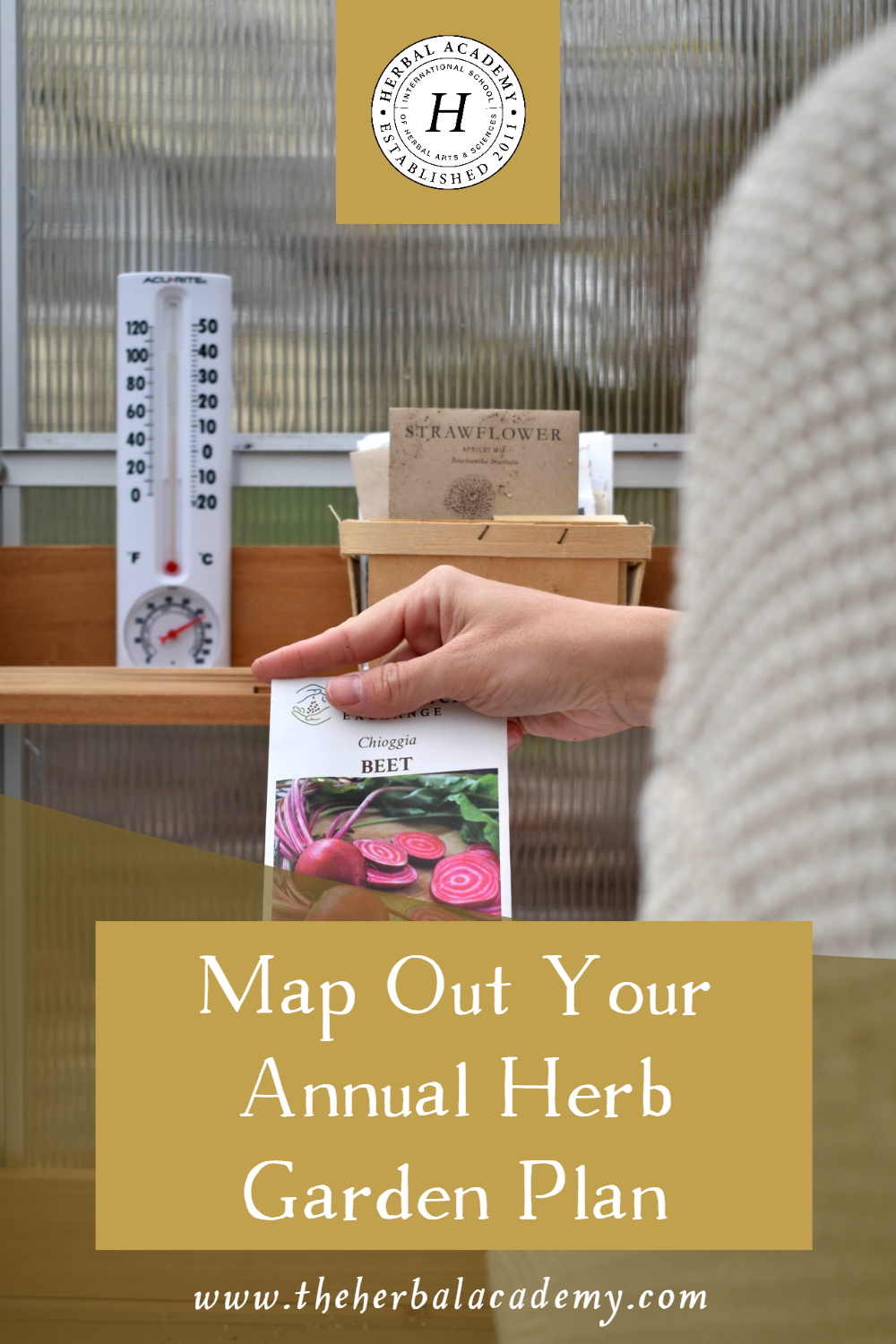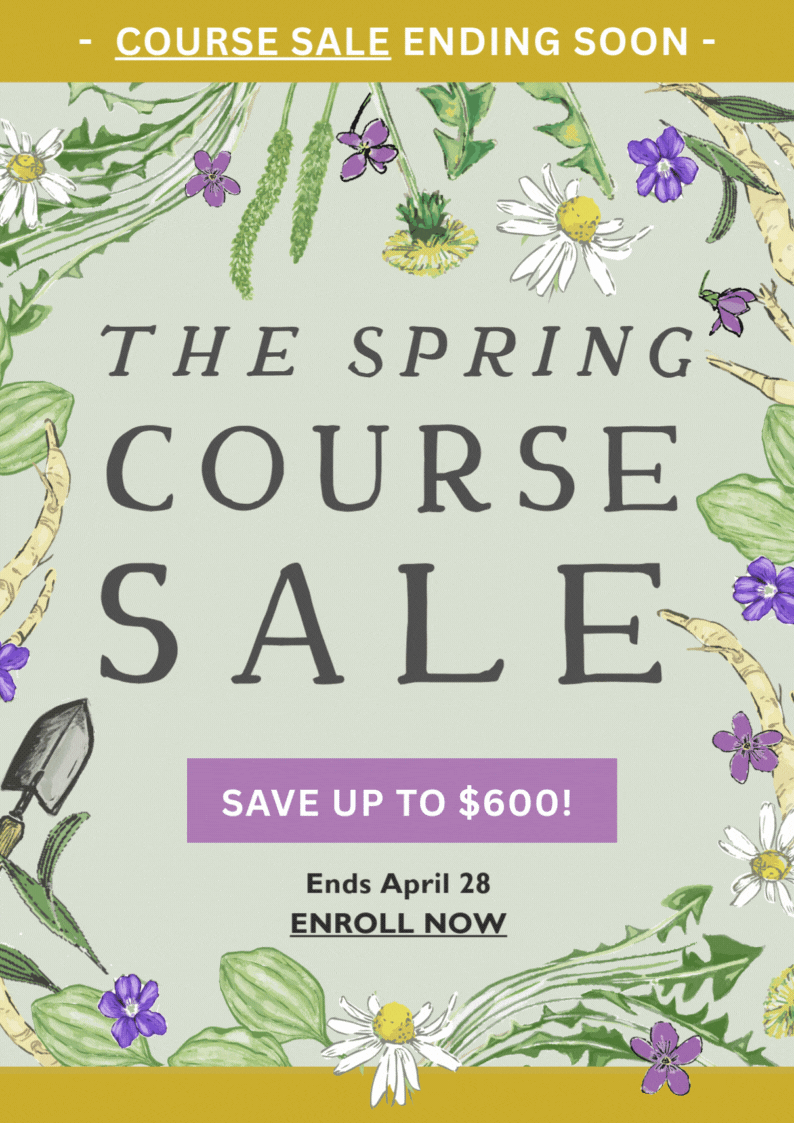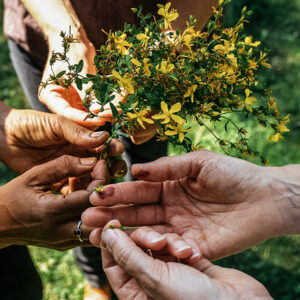
Herb Gardening Yearly Outlook: Map Out Your Annual Garden Plan
When spring rolls in and your inner green thumb starts dreaming big again, it’s time to map out your annual garden plan!
Even if your outdoor space still has traces of spring snow, now is the prime time for dreaming, scheming, and planning your herbal garden of delights. A little forethought now can set you up for a year full of blooms, veggies, and herbs. Yes, YOU can grow that!

Here’s Your Step-By-Step Garden Planning Guide
Reflect on Last Year’s Wins (and flops)
Reflecting on what did and did not work well in your garden the previous year will help you plan a better route for the coming year’s garden. What worked well in your garden last year? What didn’t? Was your soil healthy? Soil additives can provide key nutrients to help your garden be more of a success. You can read more about soil additives and amendments in the HA article 4 Organic Soil Amendments for the Herb Garden.
What about where you planted your garden? Did you realize your ground is too rocky and you’re better off using raised beds? Or maybe a combination of raised beds and in-ground gardening is something you can explore.
What about the sun? Did your garden receive the full sun requirements for your plants or is it shady for too many hours of the day? Or, did some plants in your garden receive too much sun exposure? This can happen especially during the hot months of summer if you live in a sunny climate. Use this as a foundation for growth. Write your observations down and make a plan for the best foundation for your garden.
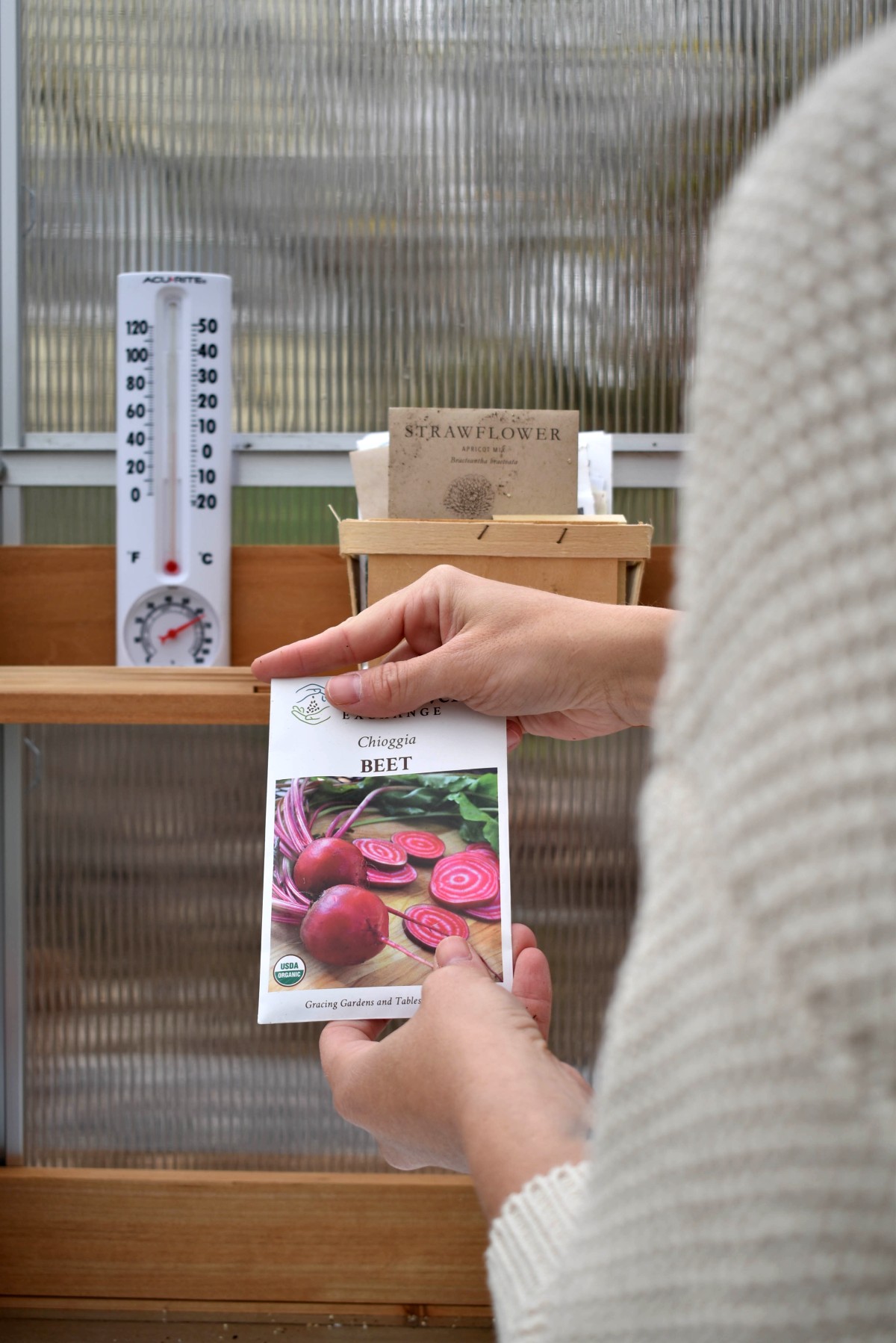
Choose Plants That Match Your Space, Climate, and Vibe
The first thing when deciding which plants match your space is to learn which climate zone you live in. Once you learn which zone you are in, you can choose the right plants that thrive in that climate. If purchasing seeds, you should be able to find the growing zone for that plant printed right on the seed packet. It should also state whether the plant will need full sun, partial shade, or shade. This will help you to know which plants will fit in your area according to how sunny or shady your spot is. You can also browse the growing tips section of each plant on websites like this one.
When deciding what to grow, consider the space you have. If you live in an apartment, container and vertical gardening are likely the best choices. If you have a medium to large area to work with, you can choose a combination of raised beds, containers, and in-ground gardening. Some herbs, such as those in the mint family, like to run wild and free and can take over a garden bed, so you will want to consider using pots for plants like those or choose an area where they can run free without crowding out other plants.
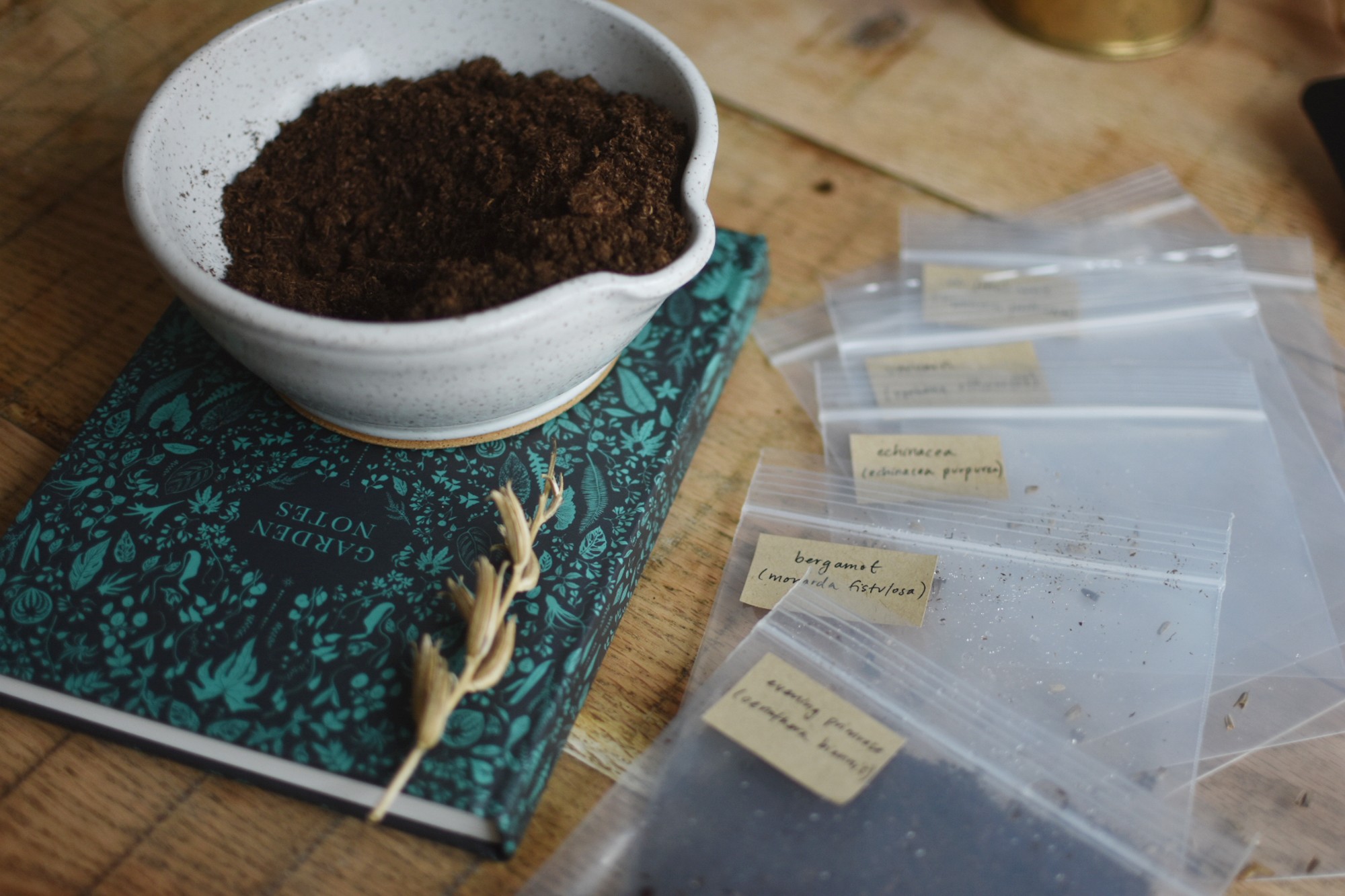
Another thing to consider is the vibe you are looking for. Perhaps you are interested in a garden of herbs that help support your health needs such as mullein (Verbascum thapsus) for respiratory health or nettle (Urtica dioica) for allergies, or these 5 Herbs for Mental Health Support. Maybe you are looking for some easy-to-grow herbs like these 7 Best Plants for a Beginner’s Herb Garden or a fun-themed garden. Fun-themed gardens to consider:
- Pollinator garden to attract bees and butterflies. Consider herbs such as lavender (Lavandula spp.), chives (Allium schoenoprasum), basil (Ocimum basilicum), and bee balm (Monarda fistulosa).
- Tea garden to grow herbs for tea such as mint (Mentha spp.), chamomile (Matricaria chamomilla), echinacea (Echinacea angustifolia), lemon balm (Melissa officinalis), and rose (Rosa spp.).
- Edible flower garden with flowers to use in desserts, salads, syrups, ice cubes, and in many other creative recipes such as nasturtium, rose, violet (Viola odorata), dandelion (Taraxacum officinale), calendula (Calendula officinalis), bee balm, and many more.
Sketch Your Layout
When planning the layout of your garden, remember companion planting to keep things balanced. Keep in mind which plants support each other and which don’t. For instance, echinacea does well with yarrow and lavender, but not with mints that would crowd it out or cilantro that prefers shadier spots. You can read more about companion planting in our blog article Companion Planting Herbs.
Plan Your Planting Schedule
After making note of which plants need to be started ahead indoors and which need to be directly sown, write down estimated dates to transplant your seedlings outdoors and direct sow your other herbs.

The Seasonal Breakdown for a Year of Thriving Herbs
Early Spring: Plan, Plant, Propagate
Prepare your garden beds by raking away old debris and adding nutrient-rich compost. Select the herbs you want to plant and decide if you will plant seeds or purchase plants from a local nursery or farmer’s market. If using seeds, read the packet to see if you need to start seeds indoors or direct sow them after frost. Read about other spring tasks for your garden here.
Late Spring: Transplant + Fertilize
During the weeks of late spring, transplant seedlings that you’ve started and fertilize them with organic compost. Don’t forget pest prevention! Recipes like Soap Spray and Garlic Oil can make a big difference.
Summer: Maintain + Harvest
Water plants regularly and harvest herbs like mint, oregano, and sage. Keep plants healthy and happy. Check on your plants weekly and deadhead any flowers that are wilting to encourage the plants to produce fresh blooms.
Mid-Summer: Prune + Propagate
Prune your plants to prevent overcrowding. Mulch around your plants to retain moisture and continue to keep a close eye on the watering.
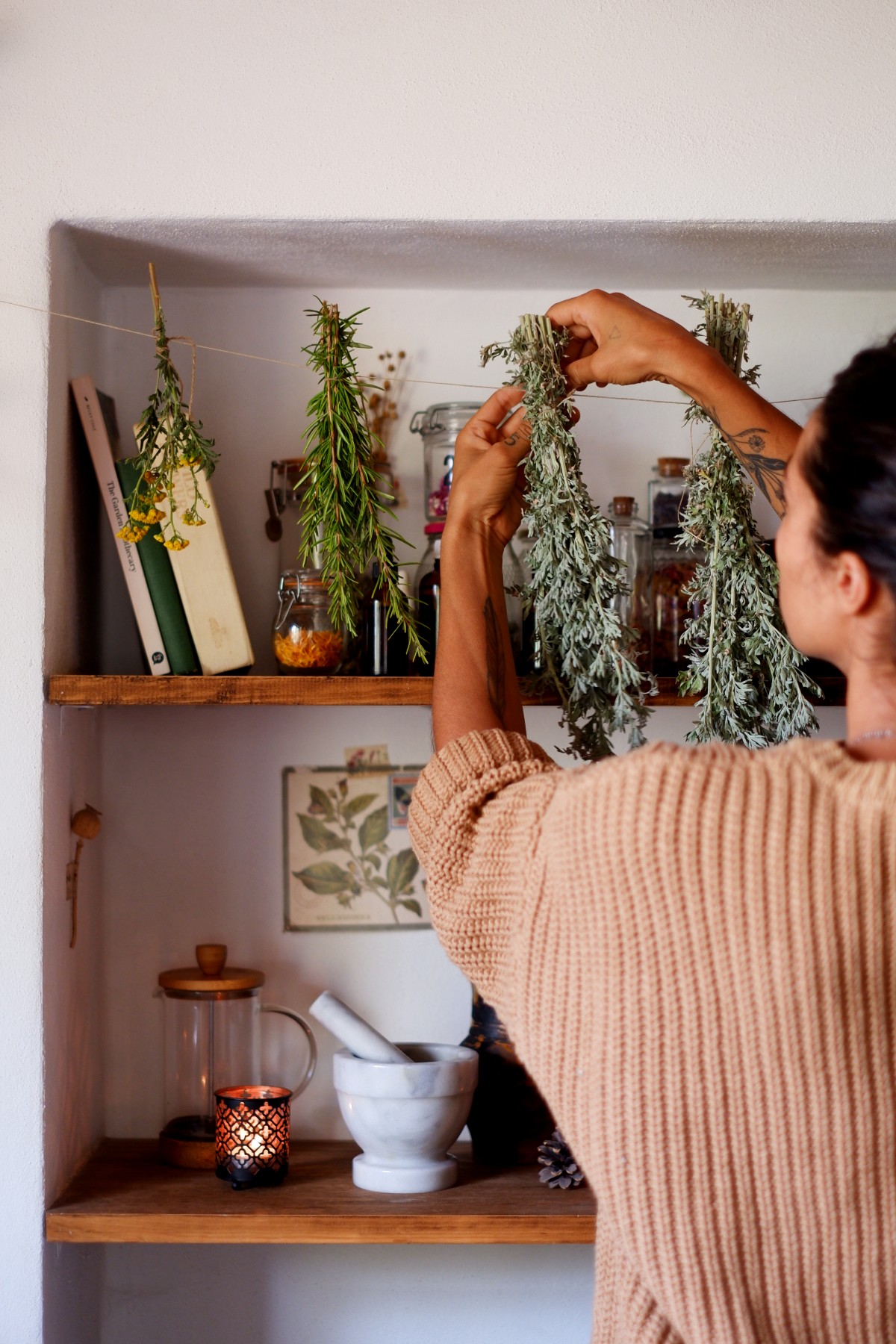
Fall: Harvest + Preserve
Harvest your herbs before the frost. Dry them and store them in jars for teas and to use in herbal preparations.
Winter: Indoor Care + Foraging
During the winter months, it’s time to focus on caring for indoor herbs and foraging winter greens. Bring any plants indoors that cannot survive the winters in your area. Pull up trellises, plant stakes, or other garden supports and store safely away until spring. Use garden shears to cut down any annual plants left over. Cut the plant stalks at the surface of the soil. You can help protect the soil over the winter by covering with a layer of mulch and then work that mulch into the soil before you plant again the next spring.
In Closing,
Whether you’re dreaming of a backyard oasis, a balcony herb garden, or a windowsill of greenery, annual planning is your secret weapon to herb gardening success.
